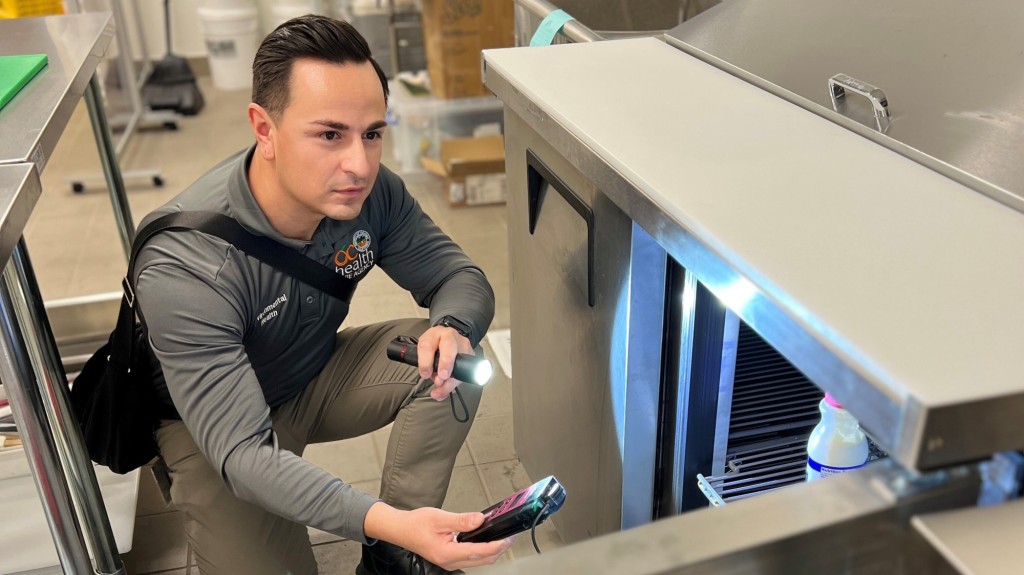If you’ve left your house today, there’s a good chance you’ve encountered something overseen by the Environmental Health Division of the Orange County Health Agency (OCHA).
Got your car’s oil changed? Environmental Health made sure hazardous waste was disposed of properly. Went to the beach? The agency checked the water quality. Got a tattoo or piercing? The operators of the business have to take an annual training course and also register with OCHA.
But perhaps what people will most recognize from the Environmental Health Division are restaurant health inspections.
José Valdez has been a health inspector with OCHA for the past six years. His family owned a restaurant when he was growing up and he had experience in the food industry as a baker and fry cook, which meant he was interacting with inspectors — a lot.
“Inspectors were like consultants,” Valdez said. “I had positive experiences with them.”
A typical day for Valdez, who is a level three inspector, meaning he dedicates a portion of his job to supervising and training less experienced inspectors, starts around 7 a.m.
Inspectors are assigned to districts within the county. Valdez oversees facilities in Huntington Beach and Costa Mesa. An automated, centralized system shows him customer-filed complaints against restaurants, which restaurants have gone the longest since their previous inspection, and which restaurants have been closed and need to be reinspected before they are allowed to reopen.
On some of his busiest days, he can visit three to five restaurants a day. Inspectors who don’t have supervisory responsibilities would have more.
His first move is to wait in line like any other customer and observe service.
“Then I identify myself to whoever is in charge and why I’m there,” Valdez said. Health inspections can be triggered by complaints or foodborne illness investigations, in addition to routine inspections.
Read the full article here






